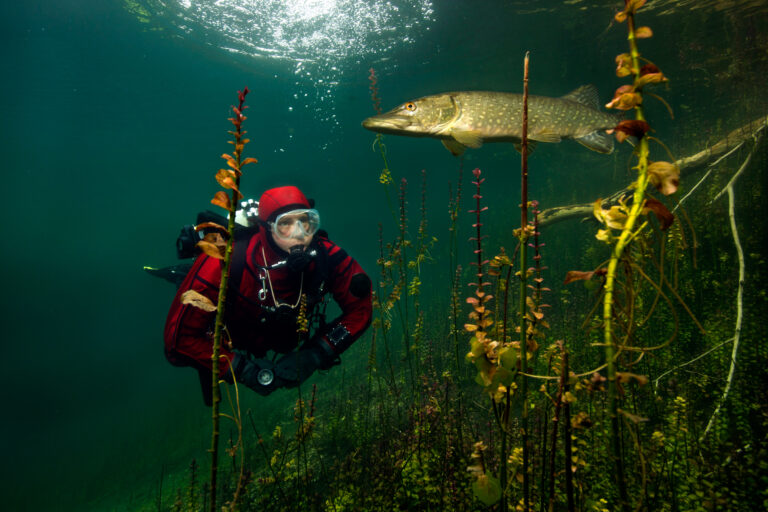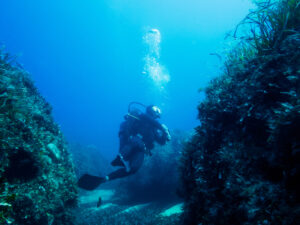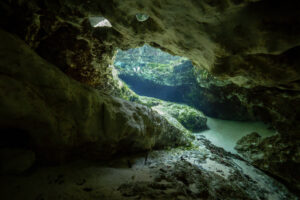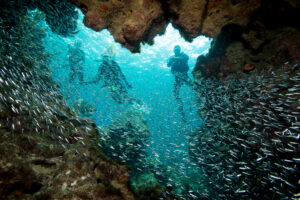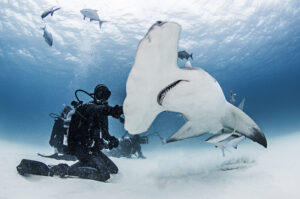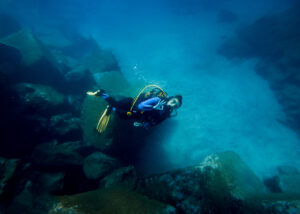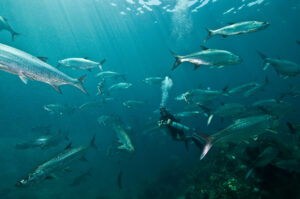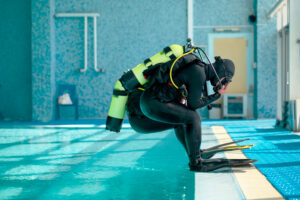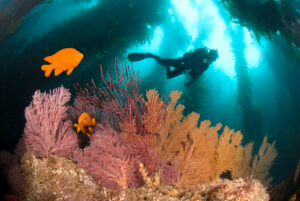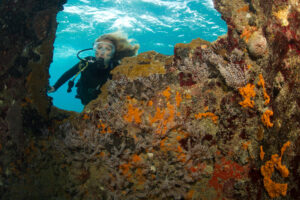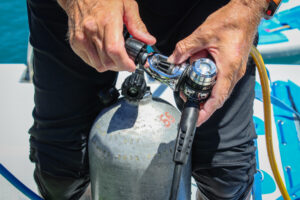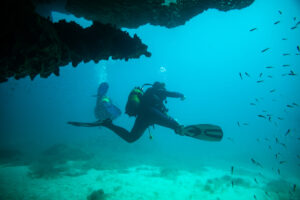What Are Wet Notes?
Wet notes are an indispensable tool for scuba divers, serving as a reliable means of underwater communication and data recording. These waterproof notebooks allow divers to jot down important information, whether it’s communicating with dive buddies, mapping underwater terrain, or recording scientific observations. The utility of wet notes extends beyond simple note-taking; they are essential for ensuring safety, aiding navigation, and facilitating detailed underwater research. As scuba diving environments can be unpredictable and sometimes hazardous, having a dependable method of recording and sharing information underwater is crucial. Wet notes offer a versatile and durable solution, making them a staple in the diving community.
Historical Development
The need for underwater communication has existed since the early days of diving. Initially, divers relied on rudimentary methods such as hand signals and basic slates. However, these methods had limitations, particularly when it came to conveying complex information or recording detailed observations. The concept of wet notes emerged as a response to these limitations.
The origins of wet notes can be traced back to the mid-20th century when divers began experimenting with waterproof paper and specialized pencils. These early iterations were simple but effective, allowing divers to write underwater without the ink smudging or the paper disintegrating. As diving technology and techniques advanced, so did the design and materials used in wet notes.
Over the decades, wet notes have evolved significantly. The introduction of synthetic materials like plastic and waterproof fabrics improved the durability and usability of these notebooks. Modern wet notes are designed to withstand extreme conditions, including saltwater, high pressure, and varying temperatures. This evolution reflects the growing sophistication and demands of the diving community, highlighting the continuous quest for better tools and equipment.
Design and Material
Wet notes are typically compact and easy to carry, fitting into a diver’s pocket or attached to their gear. They consist of a waterproof notebook, usually bound with a durable cover to protect the pages. The pages themselves are made from specialized paper that resists water and allows for clear, legible writing even when submerged. These notebooks often come with a pencil or a special waterproof pen that can write on wet surfaces.
The materials used in wet notes are chosen for their resilience and functionality. Waterproof paper, often made from synthetic polymers, ensures that the pages do not tear or degrade when exposed to water. The covers are usually made from sturdy materials like plastic or coated fabric, providing additional protection against the harsh underwater environment.
Different formats and sizes of wet notes are available to cater to various needs. Some are small and pocket-sized, ideal for recreational divers who need to jot down quick notes or communicate simple messages. Others are larger and more comprehensive, suited for scientific divers and researchers who require more space to record detailed observations and data. This versatility makes wet notes a valuable tool for divers of all levels and specialties.
Functional Uses in Diving
Wet notes serve a multitude of functions in the diving world. One of their primary uses is communication. Underwater, verbal communication is impossible, and hand signals can be limited and sometimes ambiguous. Wet notes allow divers to write down precise messages, ensuring clear and effective communication. This is particularly useful in situations where complex instructions or information need to be conveyed, such as during technical dives or emergency scenarios.
Navigation is another critical application of wet notes. Divers can use them to draw maps, mark coordinates, and record bearings, aiding in underwater orientation. This is especially important in environments like caves and wrecks, where getting lost can be dangerous. Wet notes provide a reliable means of keeping track of one’s location and planning routes, enhancing overall safety and confidence.
For scientific divers, wet notes are invaluable for recording data. Marine biologists, archaeologists, and other researchers use them to document findings, observations, and measurements. Whether it’s noting the behavior of marine life, the condition of coral reefs, or the layout of underwater archaeological sites, wet notes enable accurate and detailed data collection. They are an essential tool for ensuring that important information is captured and preserved.
Advantages of Using Wet Notes
The reliability of wet notes under various diving conditions is one of their most significant advantages. Unlike electronic devices, which can fail due to water damage or battery issues, wet notes are a low-tech but highly dependable option. They function perfectly in wet environments and can be used repeatedly without any loss of functionality.
Wet notes are also environmentally friendly in their reusability. Once a dive is complete, the pages can be dried and the notes erased, making them ready for the next use. This reduces waste and the need for constant replacement, which is both economical and beneficial for the environment. The durability of the materials ensures that they can withstand multiple uses without significant wear and tear.
The ease of use is another key benefit. Wet notes require no special skills or training; any diver can use them effectively with minimal instruction. Their simple design and straightforward functionality make them accessible to all divers, from novices to seasoned professionals. The ability to integrate wet notes seamlessly with other diving gear further enhances their practicality and convenience.
Maintenance and Care
Proper maintenance is essential to ensure the longevity and performance of wet notes. After each use, it is important to rinse them with fresh water to remove any salt, sand, or debris that could cause damage. The pages should be dried thoroughly to prevent mold and mildew, which can degrade the material over time.
Storing wet notes in a cool, dry place when not in use is also crucial. Prolonged exposure to direct sunlight or extreme temperatures can weaken the materials and reduce their lifespan. Keeping them in a protective case or pouch can provide additional protection and help maintain their condition.
Common issues with wet notes include fading or smudging of the writing, which can occur if the wrong type of pen or pencil is used. It is recommended to use only those writing tools specifically designed for wet notes to avoid such problems. If pages become worn or damaged, they can often be replaced without needing to purchase a whole new notebook, making maintenance more cost-effective.
Innovations and Technological Advancements
In recent years, there have been several innovations in wet notes technology. One notable development is the integration of digital features. Some modern wet notes now come with digital components that allow divers to transfer their written notes to electronic devices once they are back on the surface. This hybrid approach combines the reliability of traditional wet notes with the convenience of digital storage and sharing.
Another advancement is the improvement in materials used for wet notes. The latest versions are made from even more robust and lightweight materials, enhancing their durability and ease of use. These materials are designed to withstand the harshest conditions, including deep dives and prolonged exposure to saltwater.
Looking to the future, we can expect further improvements in wet notes technology. Advances in waterproofing techniques and materials science will likely lead to even more durable and versatile products. The integration with other underwater technology, such as dive computers and communication devices, could also enhance the functionality and user experience of wet notes, making them an even more indispensable tool for divers.
Key Takeaways
Wet notes are a vital tool for scuba divers, offering reliable means of communication and data recording underwater. Their development from basic waterproof paper to advanced, durable materials reflects the growing demands and sophistication of the diving community. With their numerous advantages, including reliability, reusability, and ease of use, wet notes continue to be an essential part of a diver’s toolkit, ensuring safety and efficiency in underwater environments.

